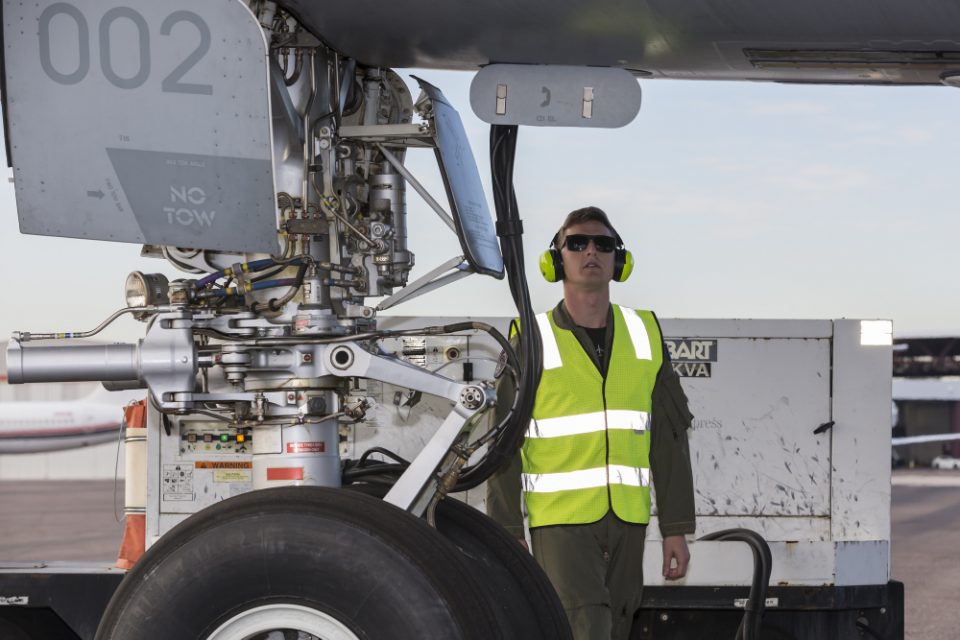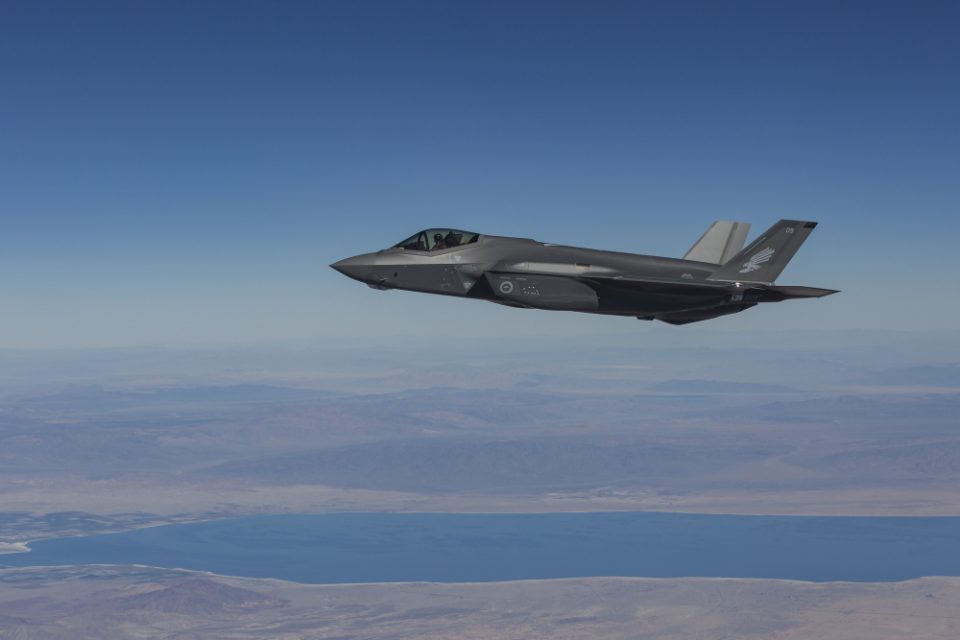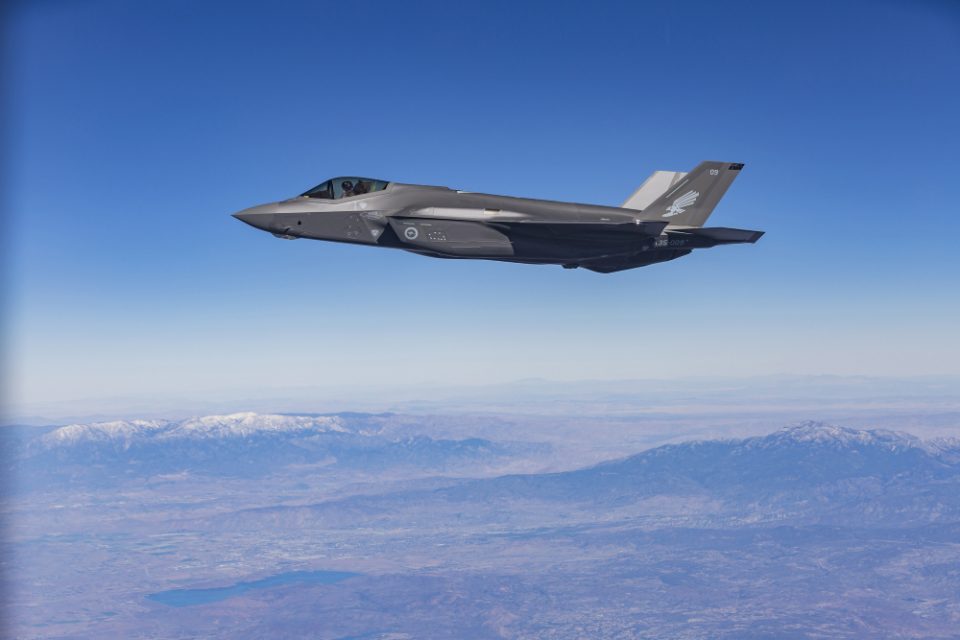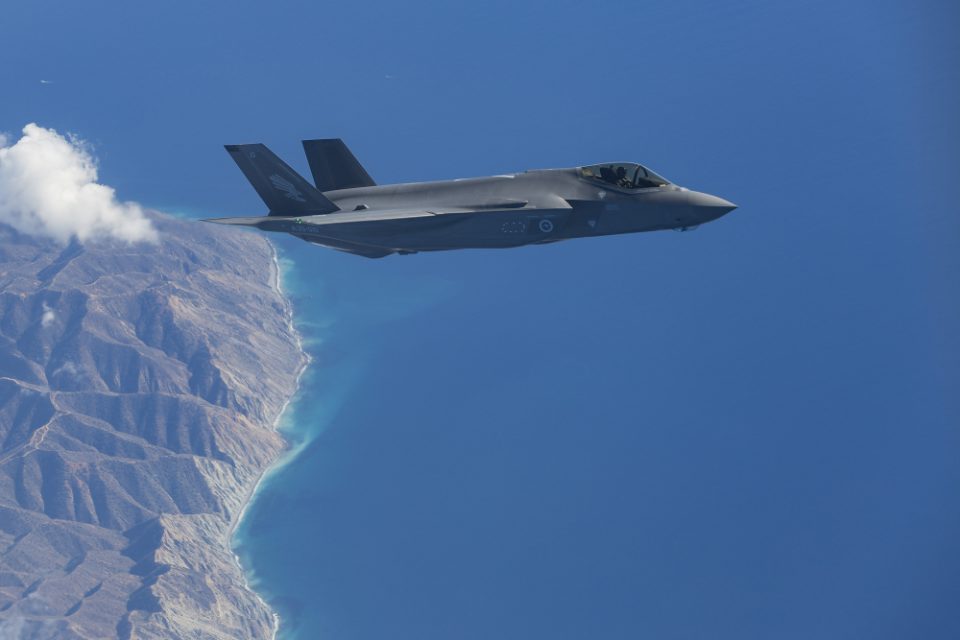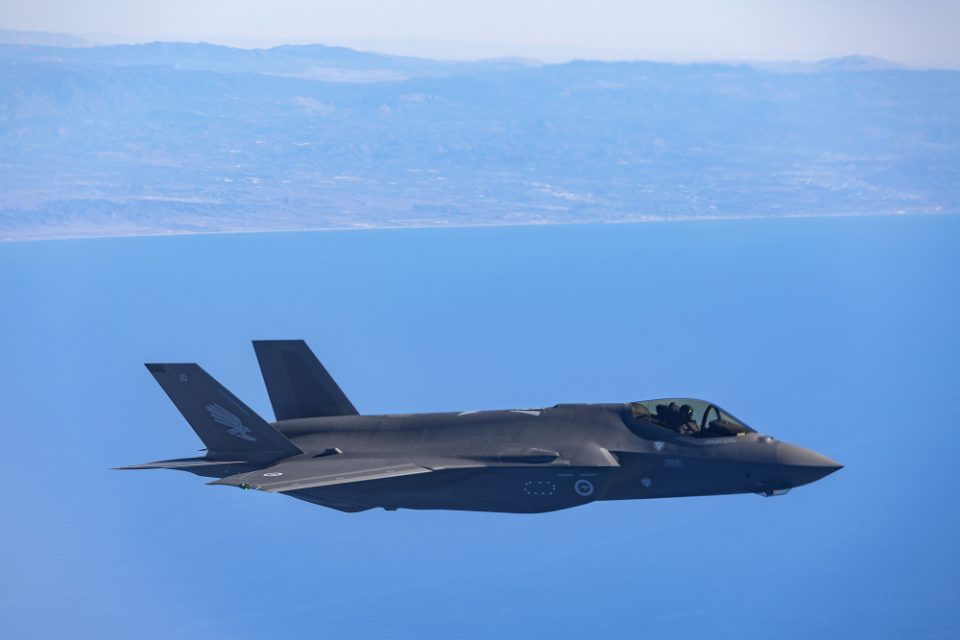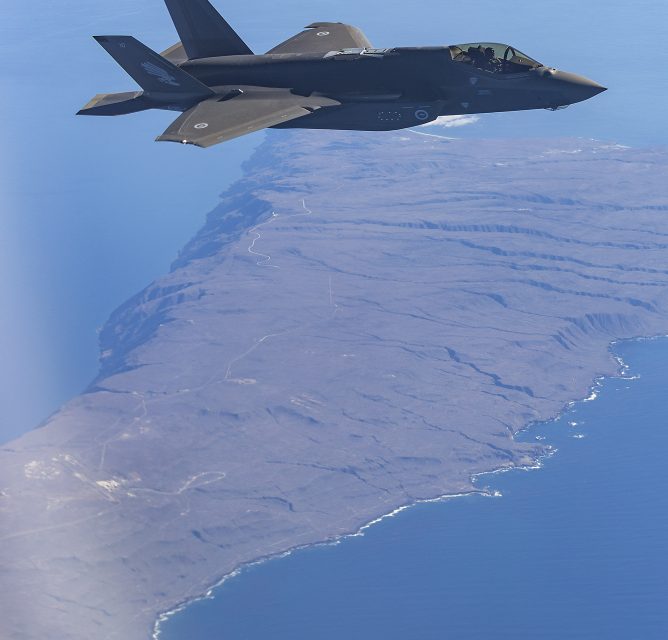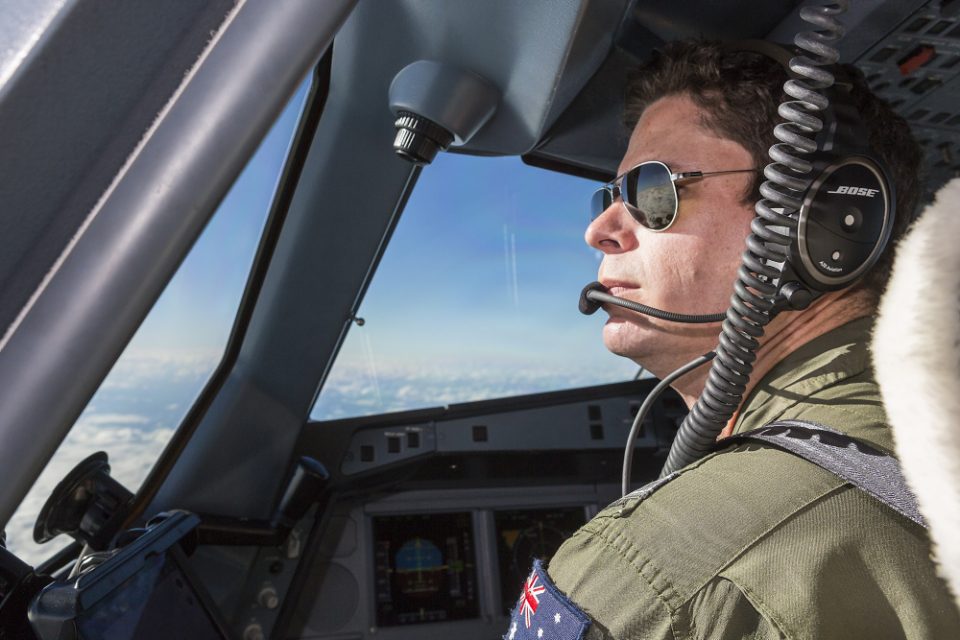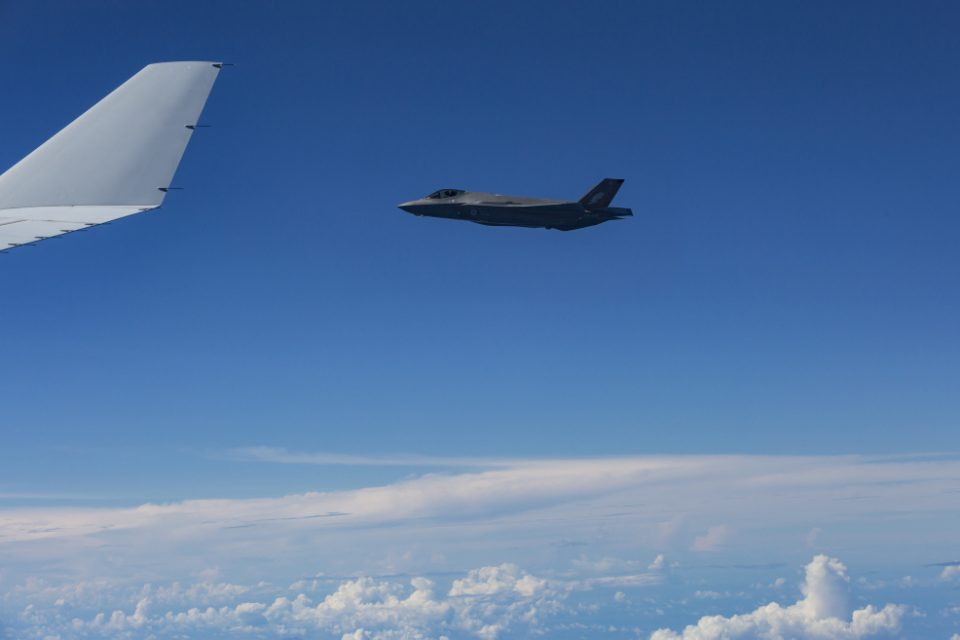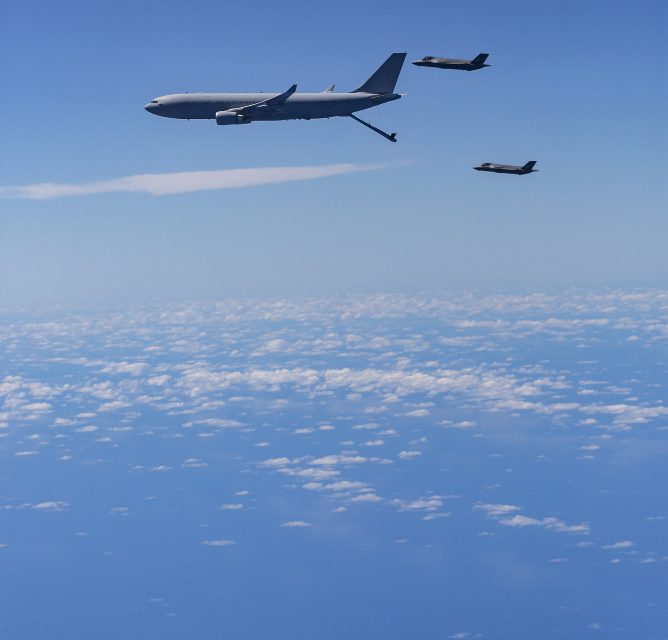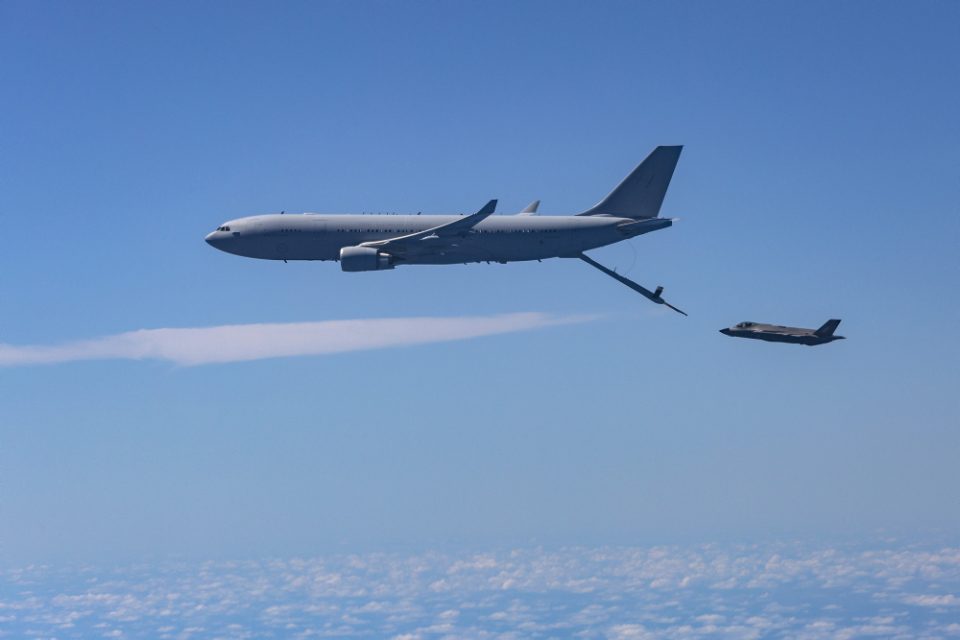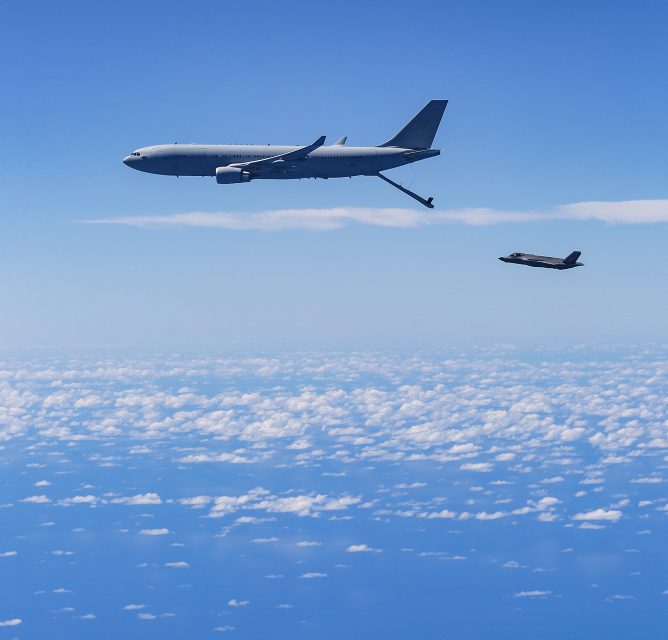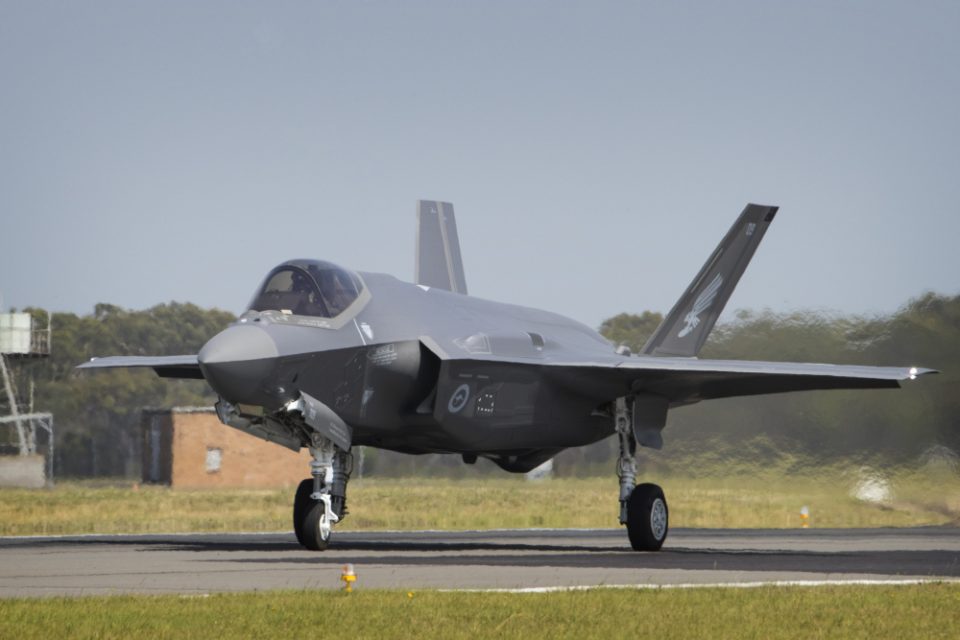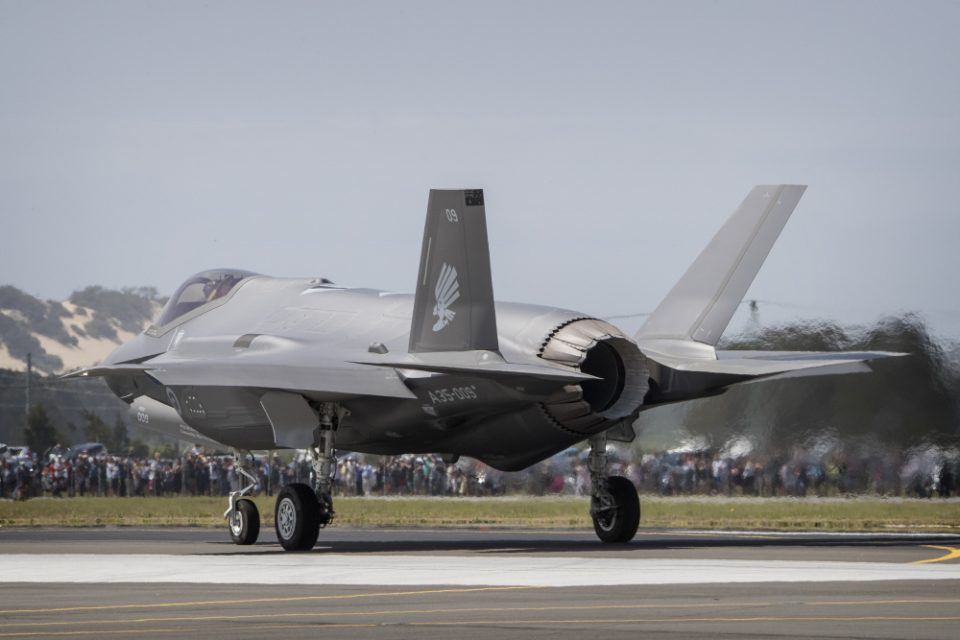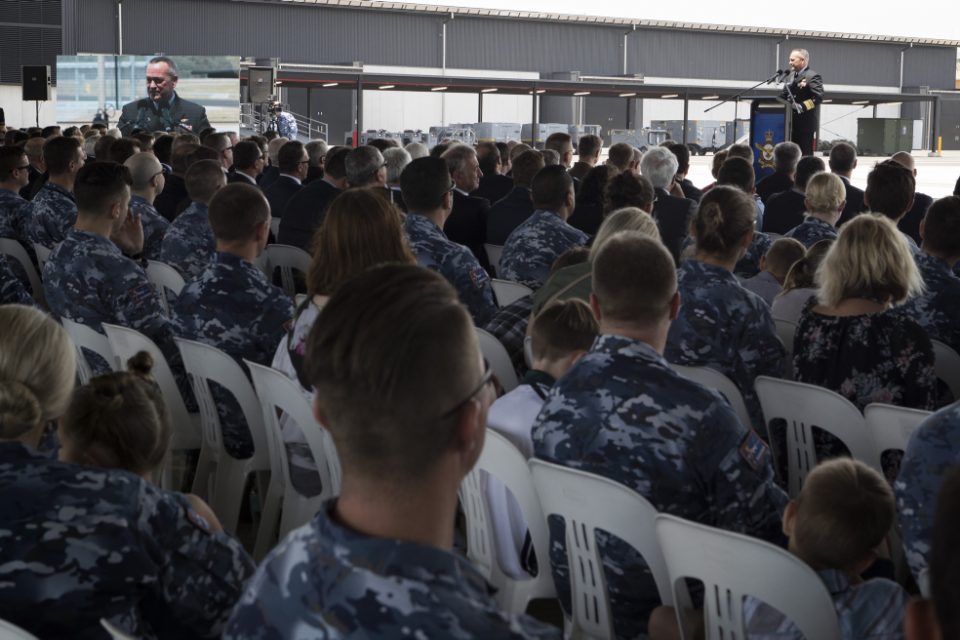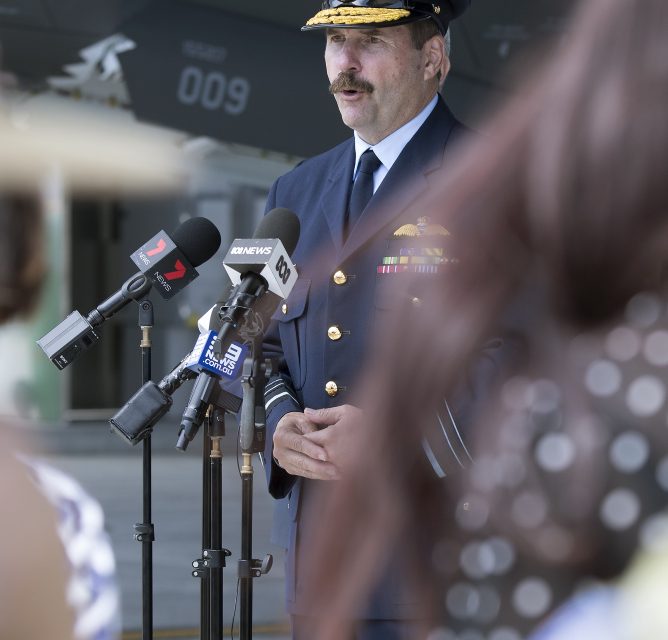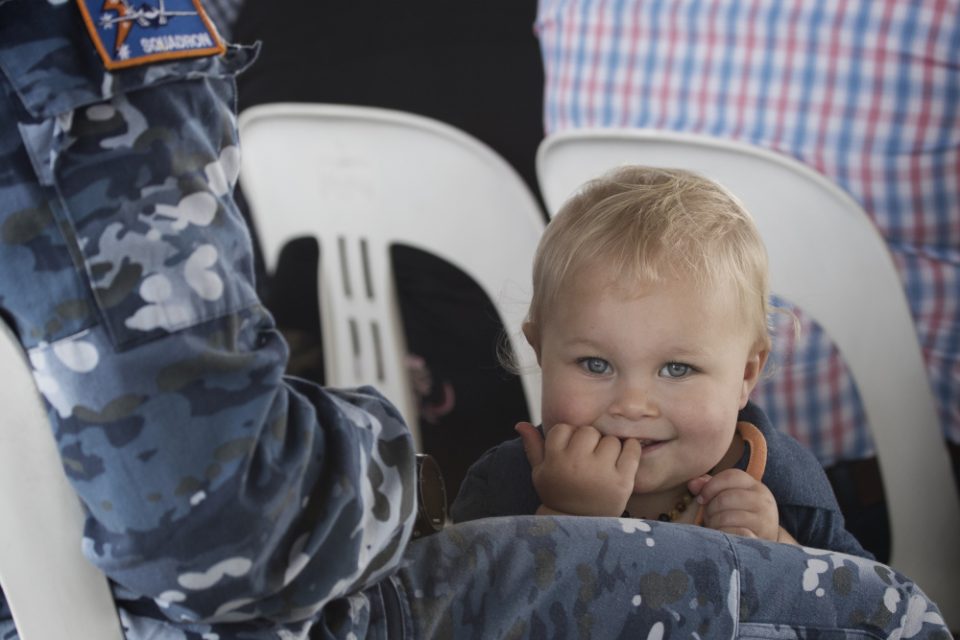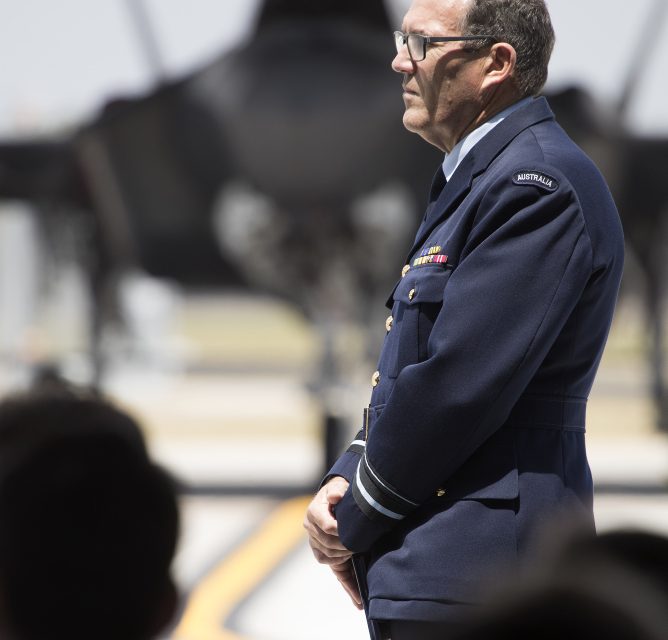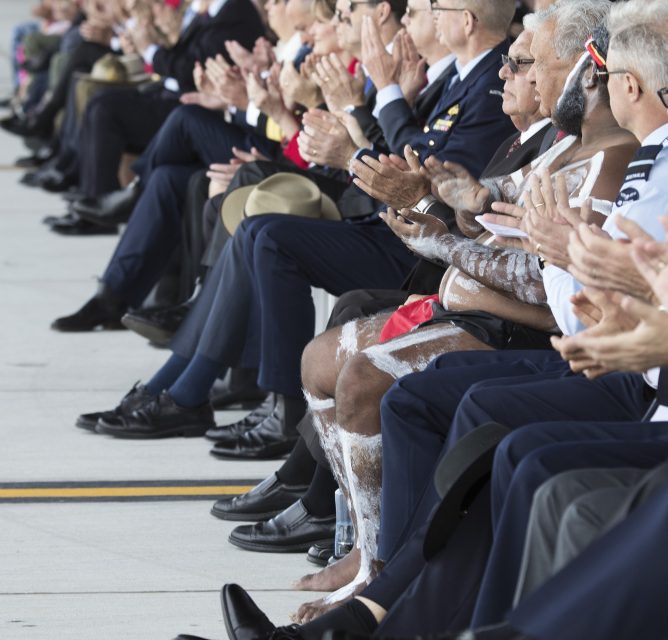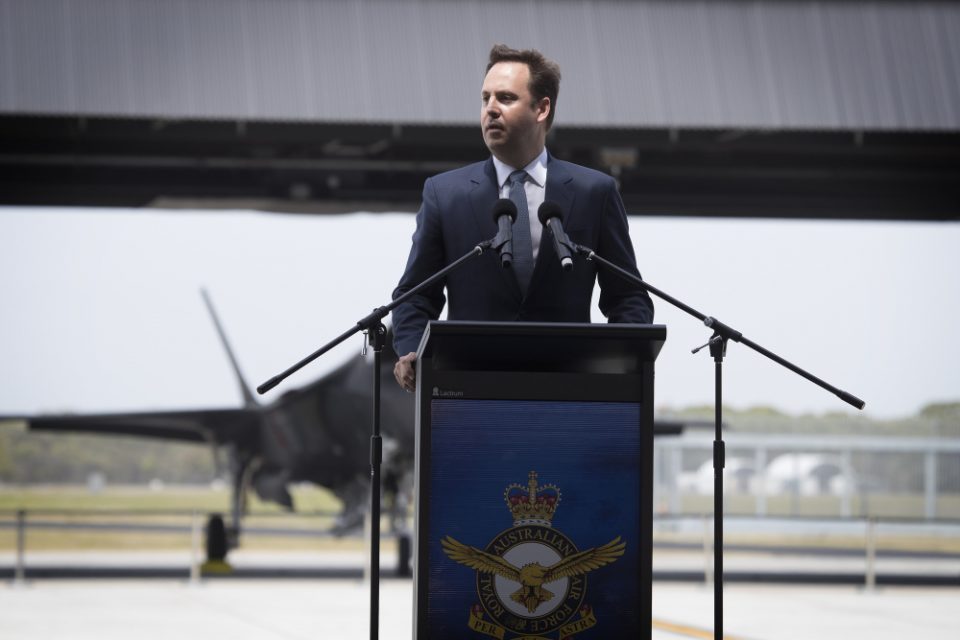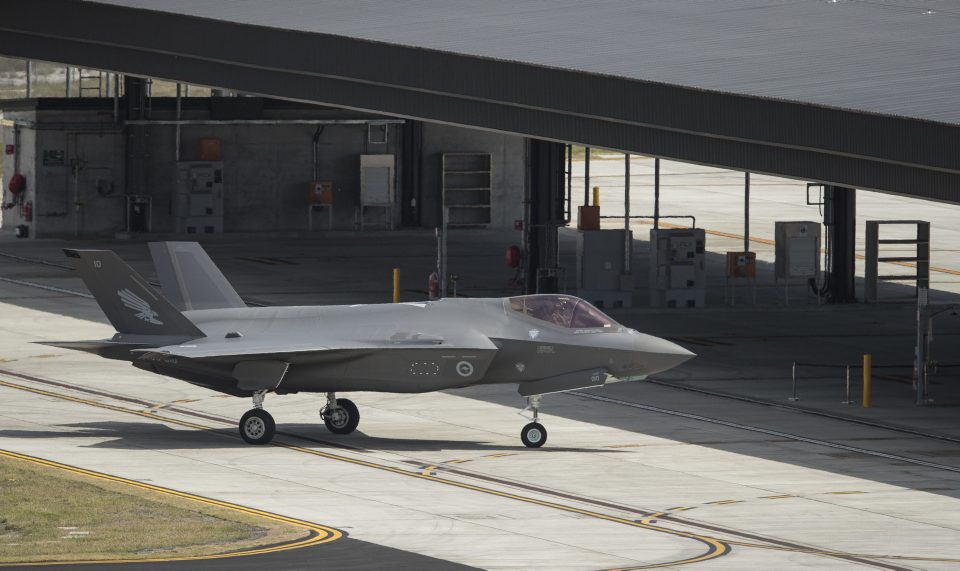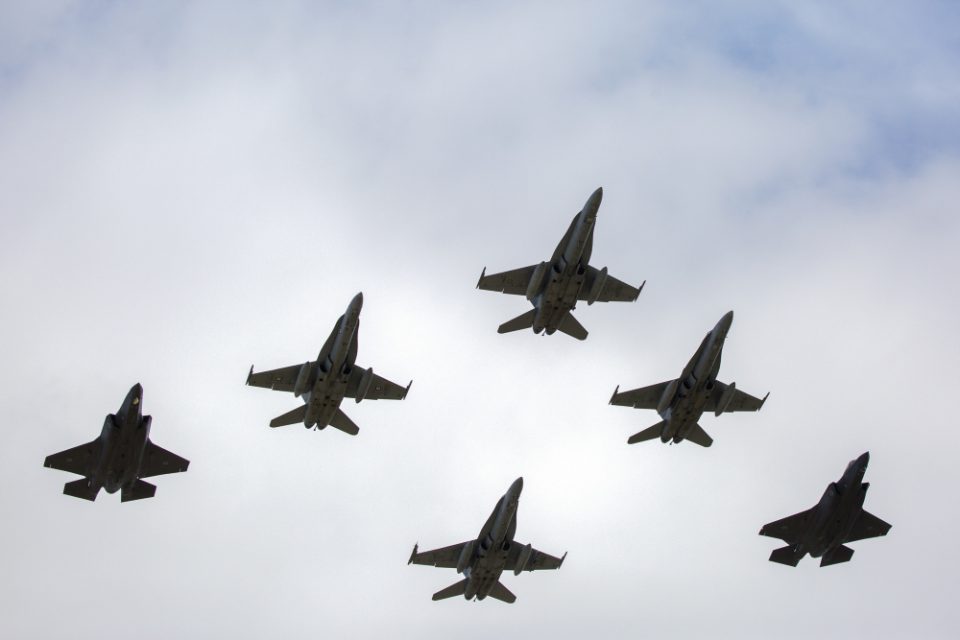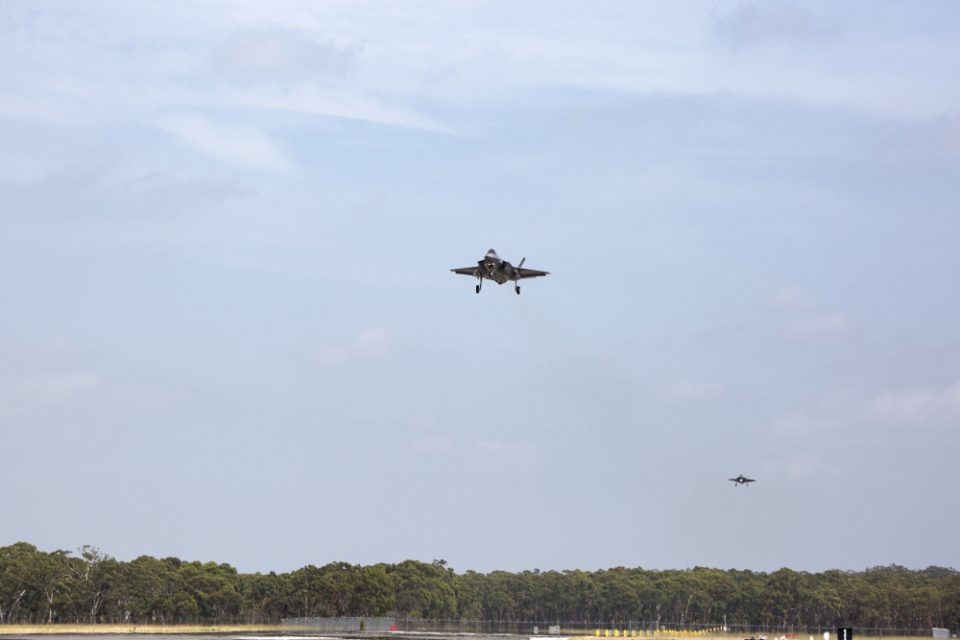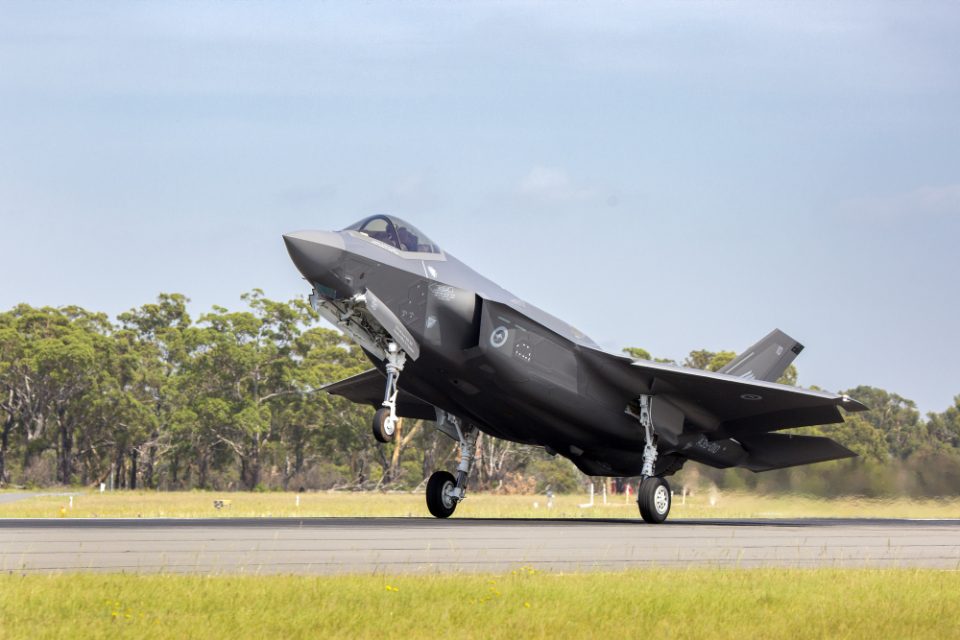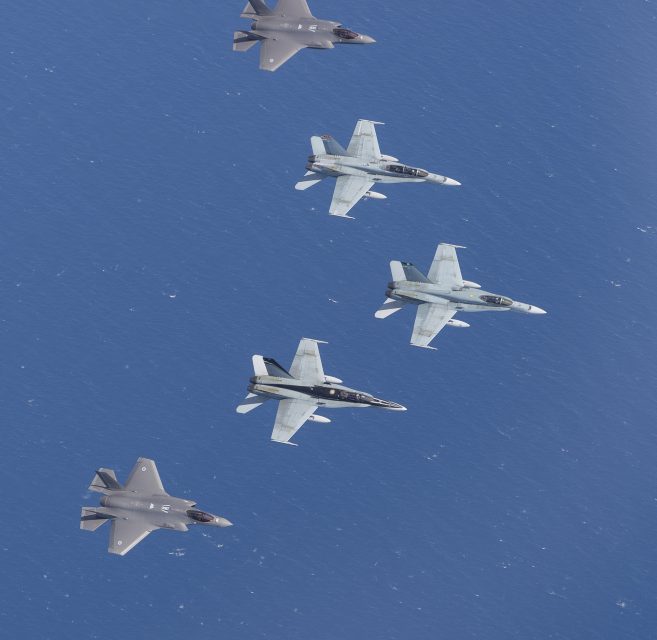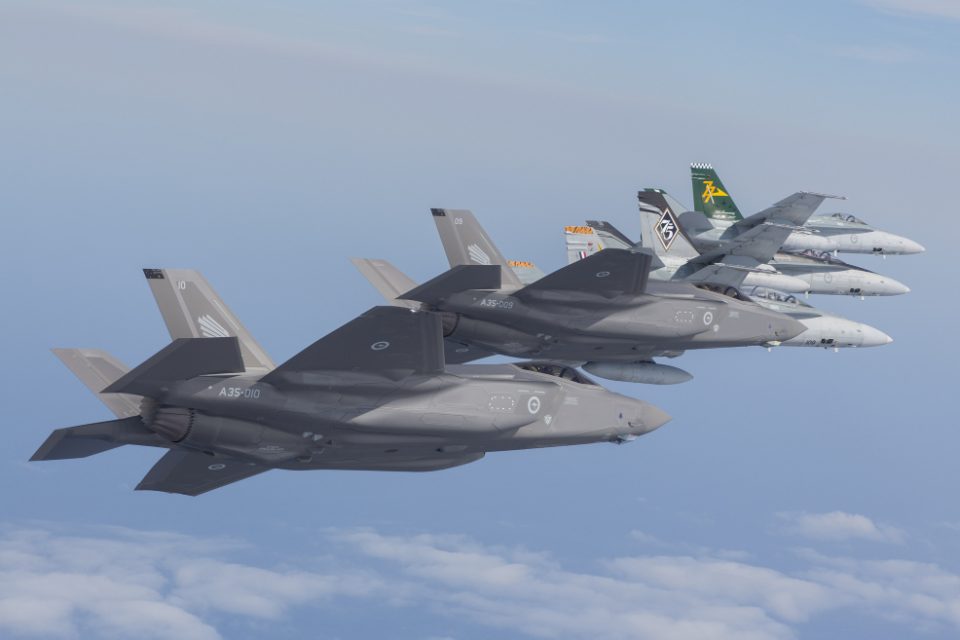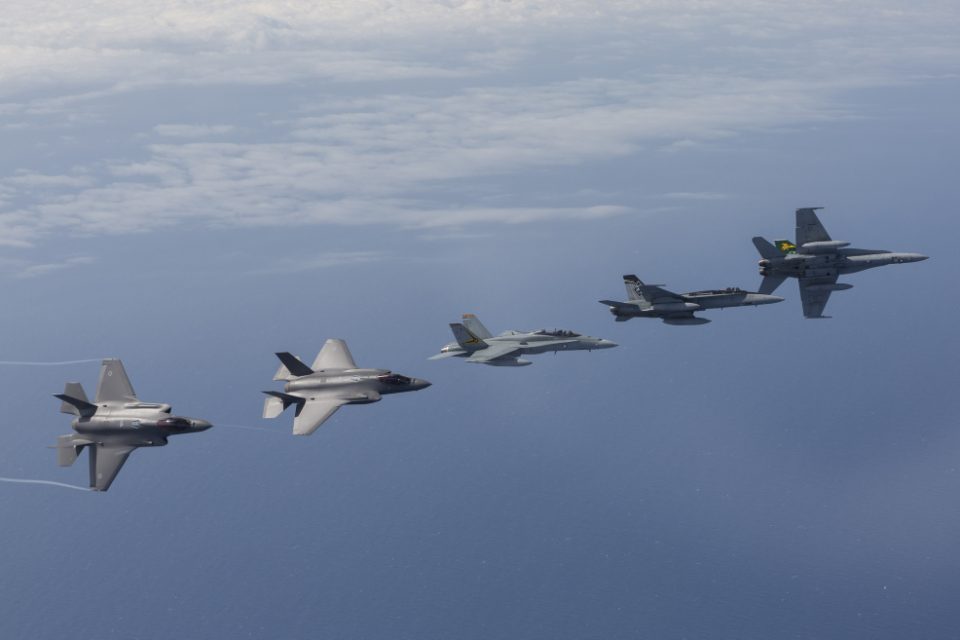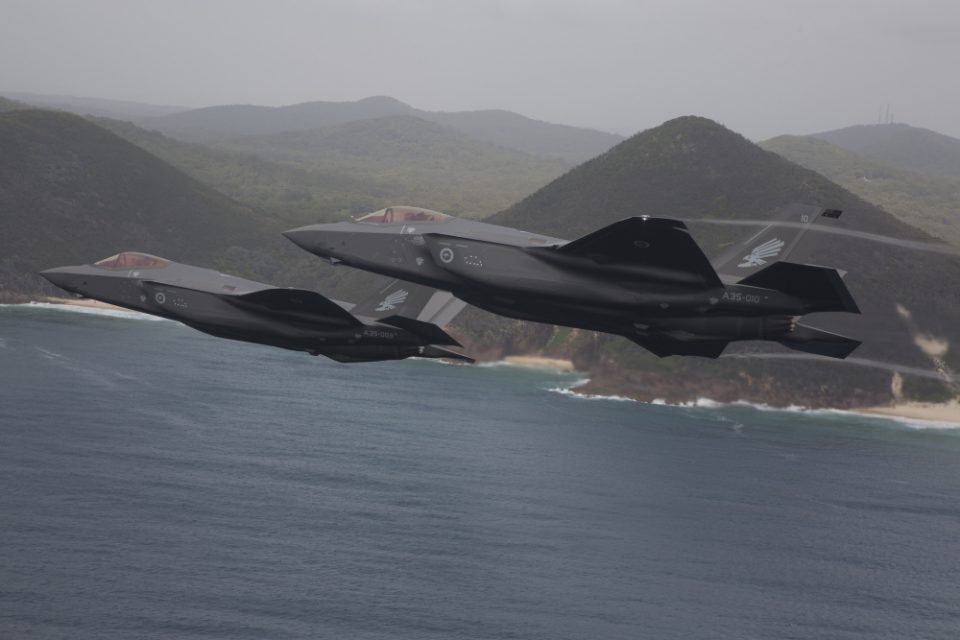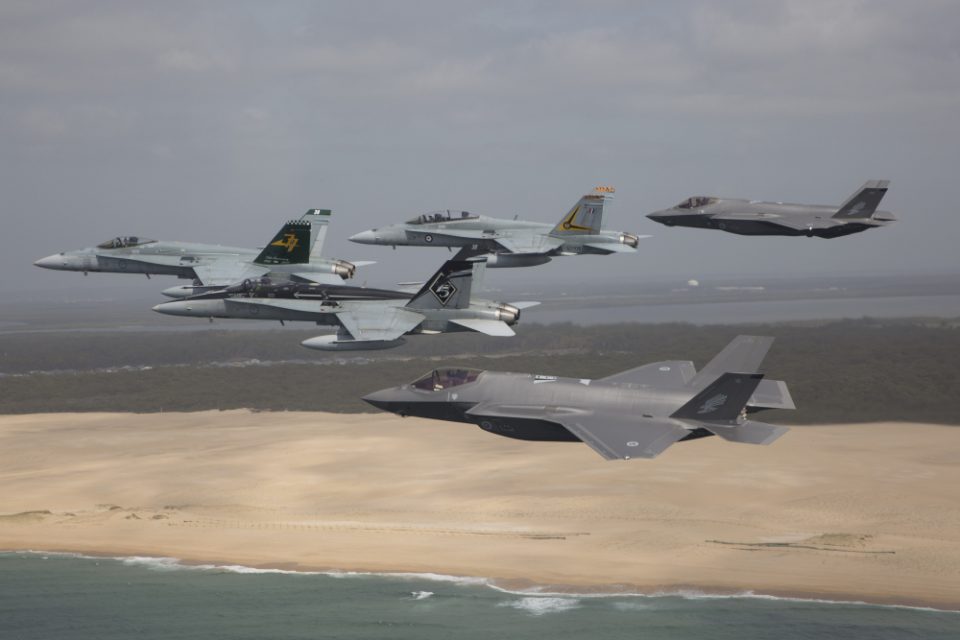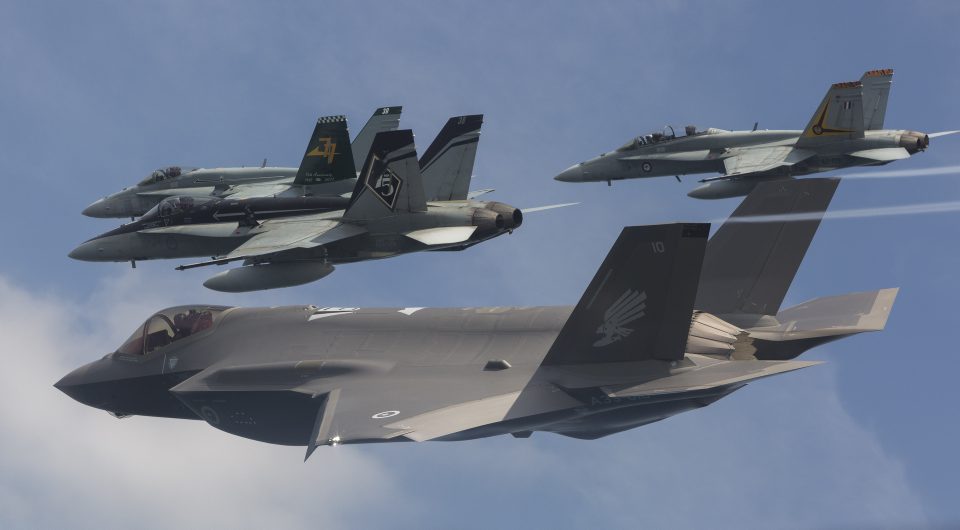By Robbin Laird, Research Fellow, Williams Foundation, Canberra
A great photo opportunity was provided by the arrival of the first two F-35s from the United States to their operating base at Williamtown Air Base in Australia on December 10, 2018.
But as the saying goes “fortune favors the prepared.”
Certainly, the Aussies have been preparing for this moment for some time, including building the facilities to house and operate the F-35s but more generally reshaping the RAAF to highlight the F-35 as the lead element in an overall transformation process, “Plan Jericho” and its continuing reverberations throughout training, procurement, and joint force development.
I have had the privilege as a report writer for the Williams Foundation based in Canberra to watch this process and discuss its evolution with many of the airpower and ADF leaders who recognized from the ground up that the coming of the F-35 was not simply about buying a new cool replacement aircraft, but an incubator of change which could transform the force if its capabilities were to be leveraged into a broader process of change within the ADF.
The first report I did for the Williams Foundation was published in 2014 based on the seminar held on March 2014. At this seminar, the primary focus was upon the F-35 and F-22 and what made fifth generation different from legacy aircraft.
An RAAF F-22 exchange pilot, a USMC pilot who was embedded in the USAF to fly F-22s and who came to part of the standup of that aircraft and went on to be a leader in the USMC F-35 transition, and an Osprey pilot and head of the Marines VMX-22 squadron, all participated and shaped a broader understanding of what the transition meant, not just for airpower but for the ground forces as well.

Air Marshal Brown then head of the RAAF was one of the key speakers, and my friend John Blackburn in his key role at the Williams Foundation provided a key role in organizing the effort as he would do for several seminars to come.
What was enlightening to see was that the conversation was not just about an airplane but about force transformation. And the later efforts sponsored by the Williams Foundation have shaped a broader discussion not just in Australia about the challenges and opportunities of force transformation associated with the F-35.1
During our visit earlier this year for the latest Williams Foundation seminar, we had a chance to visit Williamtown Air Base and discuss the preparation for the aircraft, who just now landed in Australia to prepare the standup of the first squadron in Australia.

As Air Commodore Mike Kitcher, Air Combat Group Commander, put it during our visit:
“We are seeing two basic types of change.
“The first involves the base refreshing itself. This involves base redevelopment with the base infrastructure being renewed and replaced, including runway and taxiway extensions.
“The second involves building the infrastructure and support facilities for the F-35A squadrons which will train and operate from the base.”
The OBISC or On Board Information System Center for the F-35A is built with personnel working in the Centre.
The Number 2 Operational Conversion Unit (2OCU) building is largely complete and will support the training squadron but will also house Number 3 Squadron (3SQN) when they return from the US at the end of 2018.
“3SQN will come back to Australia at the end of the year and work on the Australian Validation and Verification Activities for F-35A.
“By the end of 2020, they will move into their own facilities and the training unit (No 2 Operational Conversion Unit (2OCU)) ) will move into the buildings vacated by 3SQN.
“2OCU will look after all aircrew and maintenance training for the RAAF F-35 capability.”
By the end of 2020, there will be over 30 F-35s at the base “which is initially sufficient aircraft for 3SQN and 2OCU, and that’s our Initial Operating Capability number of aircraft.”
Now the first F-35As have arrived at Williamtown on December 10, 2018.
As Air Marshal Leo Davies put it eloquently at the arrival ceremony: THE NAYSAYERS CAN TAKE A SEAT!
An article by Andrew McLaughlin published on December 10, 2018 in Australian Defence Business Review highlighted the arrival of the aircraft.
The first two RAAF Lockheed Martin F-35A Lightning II fighters to be based in Australia have been formally welcomed to their home base of RAAF Williamtown today.
The two jets, A35-009 and -010 arrived at Williamtown at 10:20am on December 10 from RAAF Amberley. The aircraft had arrived at Amberley last week after ferrying from Luke AFB in the US via Hawaii.
These two aircraft were delivered in August and September and were the first to be accepted directly into an Australian operational unit and RAAF airworthiness authority, with the previous eight being placed onto the USAF’s system via an RAAF Chief of Air Force directive.
“This is the most advanced, multi-role stealth fighter in the world,” Defence Minister Christopher Pyne said in a statement. “It will deliver next generation capability benefits and provide a major boost to our intelligence, surveillance and reconnaissance capabilities.
“In Australia’s immediate region, Japan and South Korea are in the process of procuring the F-35A Joint Strike Fighter, and are closely aligned with Australia’s pursuit of shared strategic, security and economic interests,” Minister Pyne added.
In a separate statement, Lockheed Martin Australia Chief Executive, Vince Di Pietro added, “The arrival of the first F-35 aircraft to be permanently based in Australia is a historic occasion and we are proud of our role as the 5th generation design pioneer and F-35 original equipment manufacturer. We congratulate the RAAF, the ADF and all of our Australian industry partners who have worked to make this achievement a reality.”
F35s Arrive at Williamtown from SldInfo.com on Vimeo.
And Stephen Kuper of Defence. Connect (a website which has put together a very good countdown to the arrival of the F-35 at Williamtown series as well) in an article also published December 10, 2018 focused on what the arrival means for the RAAF.
Commander Air Combat Group, Air Commodore Mike Kitcher, described the F-35 as providing a ‘quantum leap’ in capability for the Air Force.
Both the RAAF and the broader ADF will need to rewrite the operational, tactical and strategic doctrines that have held true for the better part of the last 75 years, he told Defence Connect.
“F-35 presents a quantum leap, not only in terms of operational realities, but also technologically. For Air Force in particular, but again also for the wider ADF, F-35 is a catalyst for developing a truly fifth-generation force,” AIRCDRE Kitcher said….
The F-35 will provide more than just a quantum leap in capability for the RAAF and the individual warfighter. The aircraft will be responsible for supporting thousands of jobs around the nation.
Minister for Defence Industry Steven Ciobo welcomed the contribution made by the F-35 to Australian industry: “Australian industry is manufacturing parts that will be fitted to every F-35 in production globally, and more than 50 Australian companies have directly shared in $1.2 billion in production contracts to date.”
Defence set the key target for Australian industry participation in the F-35 program to be between $6-9 billion of production and sustainment work through to 2050.
“It is really exciting to see the fires of Australian industry reignite to get involved with the advanced and high-tech manufacturing opportunities presented by the F-35 program,” Di Pietro added.
Ten nations are currently flying F-35s, and with today’s arrival, Australia becomes the 7th nation with F-35 aircraft based locally on their home soil, joining the United States, United Kingdom, Italy, Norway, Israel and Japan.
Additionally, with the formal stand-up of RAAF Williamtown, F-35s are now operating from 16 bases worldwide. More than 340 F-35s are operating today, more than 700 pilots and 6,500 maintainers have been trained and the F-35 fleet has surpassed more than 170,000 cumulative flight hours.
And last month at the International Fighter Conference in Berlin, Air Marshal (Retired) Brown underscored how significant introducing the F-35 into the ADF was for an overall transformation process.
We published an interview with Geoff Brown on November 24, 2018 which captured what he presented at the International Fighter Conference
At the International Fighter Conference 2018, Air Marshal (Retired) Geoff Brown provided an overview of how the RAAF has shaped a way ahead along with the Australian Defence Force to craft what they refer to as a fifth-generation combat force.
In the case of the Royal Australian Air Force (RAAF) and the Australian Defence Force (ADF), the acquisition of the F-35 has been seen as not providing a replacement aircraft but a trigger to broader force transformation, with a future is now mentality.
Brown provided an overview of how the ADF is looking at the crafting of a fifth gen force or a fifth generation enabled force and some of the highlights from his presentation underscore how the Aussies are looking at this dynamic of change.
For the last 5 – 10 years in Australia we have been determining the characteristics of combat operations in the post 2025 era.
The RAAF we have been very fortunate to have been well supported and funded by government.
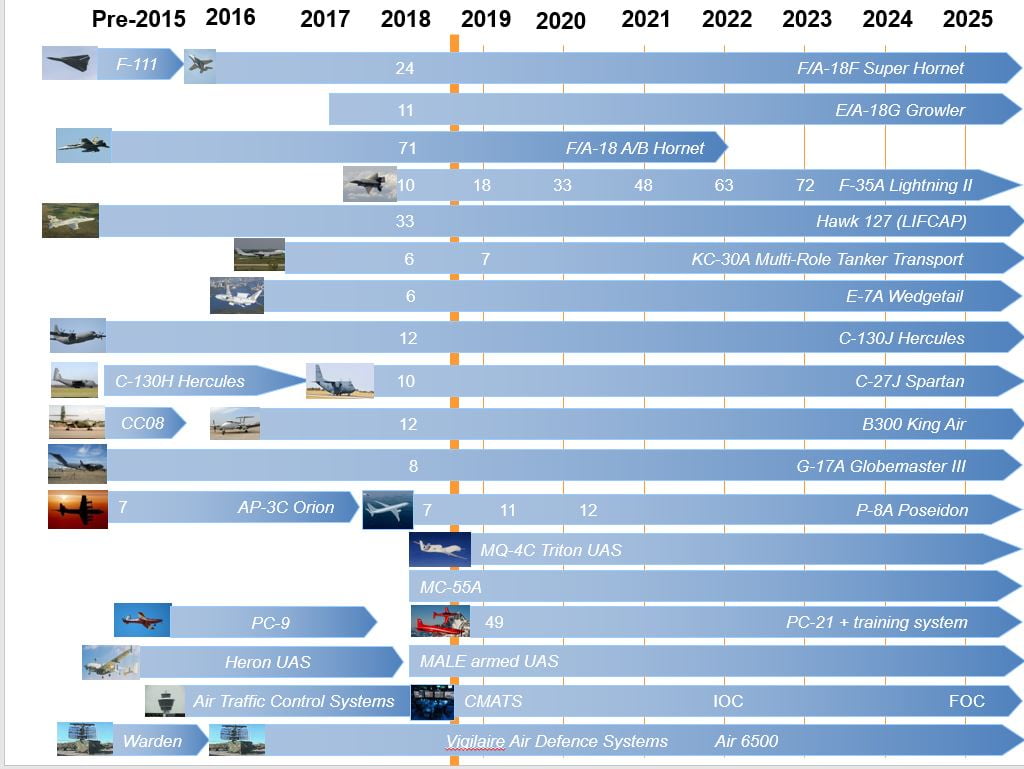
In the RAAF it’s been nice to say that most pieces of the future combat fleet are in place or that the funding has been secured. It will be a F-35’s supplemented by Super Hornets and they will well be supported by systems like Wedgetail, Growler, KC-30s, and air defence systems like Vigilaire and over-the-horizon radar, and I even think the Maritime Patrol Fleets, P-8s and Tritons, will all contribute to the air combat system…..
We have concluded in Australia, that air operations will be characterized by the capability to connect air, ground and maritime forces.
In the ADF we have actually called that 5th Generation enabled CONOPs. The ultimate goal is that the combat and strike power of a single aircraft is not defined by what it carries itself but by its ability to direct and rely upon its network partners. Even to the point of using other platforms weapons. We have been in the process of developing 5th Gen CONOPS across the ADF informed by the forcing function of 5thGen aircraft and the associated air, maritime and land systems.
In a 5thGen force, C2 systems will be enabled by flying ISR and C2 system, the combination of sensors and Stealth will enable aircraft like the JSF to operate in an Adversaries airspace and allow aircraft to serve as nodes in a dispersed and distributed air battle management system….
One of the things that the critics of the F-35 don’t get is, in all the studies of air combat, the amazing statistic is that 5% of the pilots have taken 95% of the kills. Now, when you do the analysis of those 95% of the kills and what makes the difference with those 5% of pilots, it was their superior situational awareness in all the situations that they faced that made the difference. And the F-35 gives you a massive leap in situational awareness, and that’s the key factor in 5th generation capability. It’s the integrated fused picture.
It’s worth briefly working through the value chain of the F-35. I’ll start in operations and I’ll work my way towards fundamental inputs to capability, and we’ll just have a bit of a look at some areas that we have been working on.
Over the last 10 years I almost get a hoarse voice trying to explain to people why 5th generation capabilities are important in the F-35 and why speed and maneuverability don’t necessarily have the same impact that they previously had.
What is 5th generation?
It’s low observability, it’s a low infrared signature, it’s low electronic emissions, it’s an AESA radar, it’s the data links associated with that, but the most important thing in my mind that the JSF brings is the fused picture – that situational awareness that it actually brings to the operator.
And your level of situational awareness is a combination of all those things. If you look at the difference between an F-35 and a legacy platform, you don’t have to manipulate the sensors. You’ve got a fused picture on the display, you don’t have to have as much communications between the flights; the pilots fundamentally got a lot more brain space to actually look at the tactical situation and go forward.
Now what are the implications for Air Battle Management?
We’re already implemented some of this with the rest of the ADF.
We’re successfully fusing the picture between Wedgetail and the Navy Destroyers and Frigates. One of the great decisions we made with Wedgetail was that on each one of the crews there’s a Navy Air Intercept Controller. We’ve had Mission Commander who’s are Navy Lieutenant Commanders – and our recent experience on exercises and in Iraq and Syria with the Super Hornet and Wedgetail have really shown the power of that integration.
When you look at the F-35 be able to find, fix, track, target, engage and assess. That’s the cycle. The JSF can do that all by itself, but it is far more powerful if you look at the find and fix and you use a lot of the systems we’ve got from Vigilare to JORN to Space Based Systems, to maybe even the Triton and P-8.
They’re all part of that find and fix. And if I was to look at track – Wedgetail, AWD, Growler are all parts of that. The engage – well, that’s the job of Super Hornet, JSF and Growler, and what we aspire to is to have, some integrated fire control with the Royal Australian Navy. That’s all well within the realms of possibilities.
The more nodes you’ve got, the better off it is for the entire system. And what we see is the advantage of the F-35, it does increase the capability of the entire system….
After his presentation, I had a chance to sit down and discuss his presentation and the way ahead for the ADF leveraging the F-35 as a trigger point for change.
In the discussion after his presentation, Air Marshal (Retired) Brown highlighted a number of key points which he believes are central to thinking about the future of airpower.
First, he argued that buying an advanced plane and getting on with it was crucial
“70% of your cost is about maintaining, supporting and modernizing your airplane. Why would you want to do that with a legacy jet when you can buy a fifth gen jet?”
Second, by getting the F-35 into service, the ADF could then look to add what is missing to that jet or to the air system and then look to shed legacy assets.
A case in point is support to the Australian Navy.
“When we have an effective maritime strike weapon onboard the F-35, we will look to retire our Super Hornets, with the exception of the Growler. Flying the Super Hornet has prepared us for F-35 in some key ways, notably in terms of the security requirements necessary to manage data generated by the aircraft.”
Third, the 5thgen approach as characterized by Brown is a shift to working the interconnected force in a different way.
He provided an example with regard to CEC and the Air Warfare destroyer.
“Our Navy has just started deploying our air warfare destroyers but we have already demonstrated CEC interoperability with the US Navy.
“We will put CEC on our Wedgetails to be able to provide weapons quality tracks to our ships, hence enhancing significantly the range for the strike capability of our fleet.
“And as we go forward we will find ways to directly link our F-35s with the fleet as well.
“Our Navy and Army are now focused on fifth generation communciaitons with their platforms as well, which is why having the F-35 in the force can drive change in the strategic direction in which you want to go.
“You fly a legacy asset you cannot drive the kind of change the ADF needs in the near to mid-term.
“It is not an abstract, long-range aspiration or goal.
“As the head of the RAF Lightning force, noted, the future is now.”
Fourth, the change in the overall structure of the ADF and the architecture to guide its development is being driven by a fifth-generation mentality and approach as well.
“Our architecture is not up to speed with what the F-35 can provide.
“We have a great airplane with enormous capability which will continue to evolve but a lot of the supporting infrastructure we’ve got is not designed to get the best out of that airplane.
“And I think that our focus needs to be on getting the rest of the system up to speed.”
Finally, fifth generation warfare training requires a paradigm shift.
“If you want an integrated system, you’ve got to train with an integrated system.
“You can exploit a lot of the capabilities that the F-35 brings to the fight in the live environment but the only place you can do it as a force is in the simulated environment.
“We need to develop fifth gen warfare networked simulation capabilities.
“And you just can’t afford for the simulated environment to be behind the airplane.
“It’s got to be updated at the same rate that the aero plane is being updated.
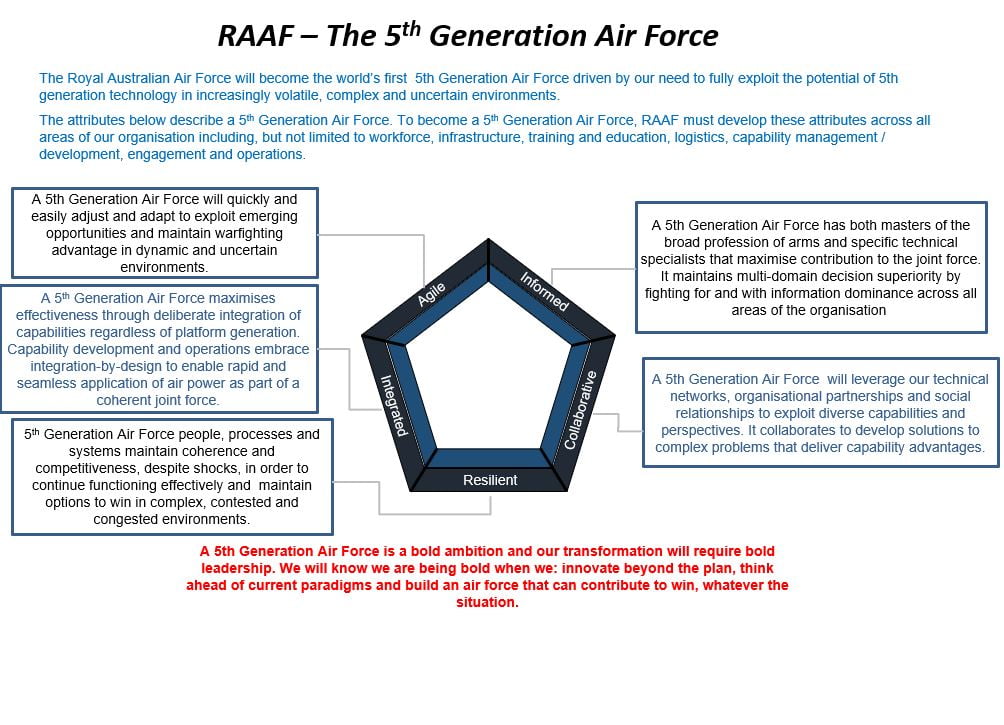
Footnotes
- See our various Williams Foundation reports as well as postings from the Central Blue column from the Williams Foundation found in our Williams Foundation section of defense.info, https://defense.info/williams-foundation/



